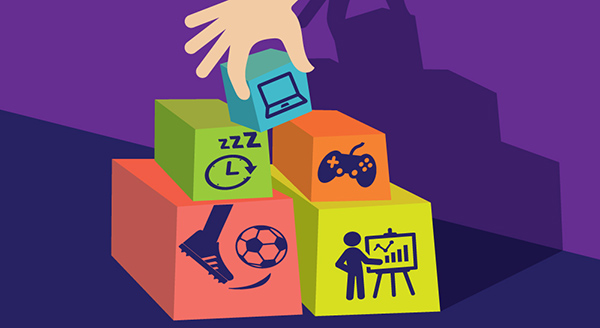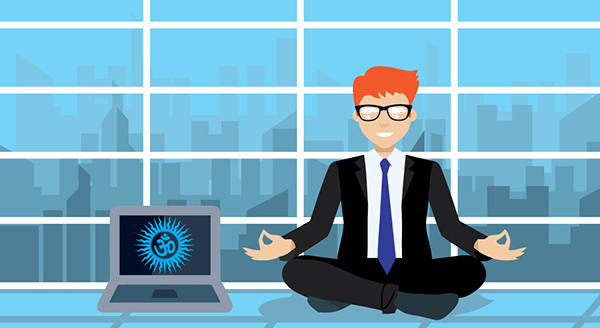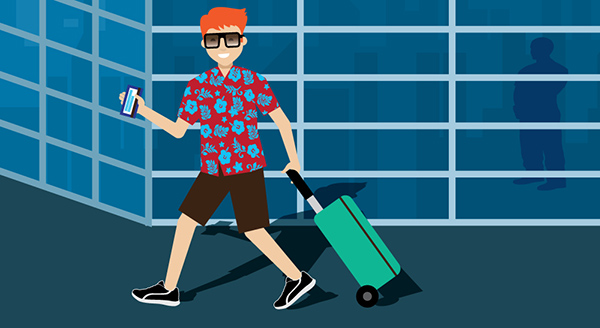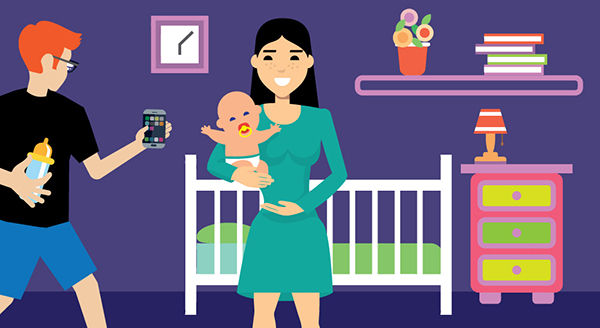By Vladimir Gendelman,
Free cafeterias. Unlimited vacation. Extended parental leave. We all fantasize about such amazing workplace benefits, but most of us haven’t experienced them yet.
That fantasy is coming to life more and more. Recently, we’ve seen employers stepping up their incentives game to attract and keep top talent. Already companies like Google and Facebook are famous for innovative employee perks and workspaces that look more like playgrounds than massive tech companies.
Top brands offer unbelievable incentives because they’ve realized what their employees already know—it’s hard to be creative in a negative environment. In the old days, creative workers who wanted to escape boring offices took up freelancing. But today, workplace incentive programs are actually improving on the perks that draw creatives toward self-employment.
See what the coolest benefits are—and who’s offering them—in this free, downloadable graphic.
Why are employee benefits important?

While incentives are a big part of deciding where to work, most creatives are intrinsically motivated. Their internal desire to succeed drives them to do their best once they’re employed, rather than external perks like competitive pay or vacation time. So why bother with benefits?
Employee benefits are important because they attract top talent, retain these workers, and encourage them to perform their best. That’s because external perks are actually a roundabout way to impact intrinsic motivation—sort of a set of fringe benefits. Strict management, poor work conditions, and workplace hostility create anxiety, which negatively affects output. Meeting employees’ needs creates a neutral workspace. But when businesses exceed expectations, they foster creativity and increase employees’ internal desire to give their best in return.
Creatives who don’t have the luxury of such a job often start freelancing, so they can set up their own optimal conditions. Here’s how businesses are mimicking those conditions to create a better workplace incentives package.
1. Flexible schedules

We live in a 24-hour world. And unlike, say, a salesperson or receptionist, a designer can work at any time. Most even prefer it that way—successful creatives tend to wake up early or stay up late to avoid distractions. Flexible schedules let creatives work when fewer people are in the office to interrupt them.
Creativity also has this funny habit of not adhering to a traditional workday. Flexible hours let designers work when they’re the most energized and thus more productive. Companies that permit flex schedules are also seeing lower absence rates and turnover; according to recent studies, as many as 63% of workers were absent less because they could take care of personal needs without wasting vacation or sick days.
Employers can’t always bend so far as to let creatives work in the dead of night, so people who want to work when it suits them freelance. In response, companies are establishing programs that reward performance over time spent working.
2. Food

Apparently, the way to a creative’s heart is through their stomach—whether it’s donuts during morning meetings or cake for someone’s birthday. But lately, some companies are setting out veritable buffets with snack pantries, free or discount meals, and even gourmet dining. Google employees, for instance, are never more than 200 feet from free food.
Free meals do more than just save employees money on meals out—they provide a way for creatives to connect. In-house eateries let workers interact with others who are stationed in different areas of the building and bounce ideas off people they ordinarily wouldn’t meet. Even employees who are hard at work on solo projects enjoy the convenience of having food nearby, so they don’t have to interrupt their work with an off-site excursion to get lunch.
You never have to go too far for some grub when you work at home. Awww.companyfolders.comnd you can actually eat when you’re hungry, instead of waiting for a scheduled break. Granted, food isn’t the sole reason people go into freelancing, but it’s an appealing perk. By providing free or inexpensive options on-site, employers can make mealtime an enjoyable experience that’s fun, fast, and way easier than cooking at home.
3. Entertainment

All work and no play make Jack a dull boy—and a lousy employee. Creatives need time to relax and recharge. That’s why many companies are starting to look more like playgrounds than offices.
Google has a reputation for its entertainment options—basketball courts, pool tables, and live music—but the search engine isn’t the only one. Zynga has a video arcade and puppy play days and Infosys has an onsite bowling alley.
Critics call these workplace wonderlands a byproduct of millennial Peter Pans. But in reality, these resources foster creativity and help employees release stress. Most companies are seeing such positive results from play, they don’t even set rules in their game rooms. Employees get to decide how much playtime they need to do their best work.
Some creatives prefer serenity over silliness—they turn to self-employment because they’d rather read a book or hang out with pets than get caught up in the hubbub of a hectic office. To help workers concentrate in peace, some offices are adding quiet rooms, nap pods, and other types of chill areas.
4. Health and wellness programs

Sitting at a desk all day causes health issues that will literally kill you, and maintaining a healthy lifestyle outside of work is difficult to do alone. That’s why companies are offering more than just a good health insurance policy—which is a necessity by the way, not a perk.
Many brands are encouraging employees to be more active and to motivate one another through daily office exercise. Others offer free gym memberships or incentives for making healthy life choices, such as eating better or quitting smoking. A handful of brands are providing access to a personal trainer or healthcare advisor, so workers can reach their goals injury-free.
Maintaining wellness saves employers money on healthcare expenses, and it positively impacts creative output. Exercise releases endorphins that can lower stress, raise energy levels, and lead to a whole list of other health benefits, all of which help employees pour more energy into their work.
Controlling their own work schedule allows freelancers time for the gym and food prep, but staying disciplined is hard without a support system. A great health and wellness program is definitely enticing to people who struggle to maintain good habits on their own.
5. Mental healthcare

The Centers for Disease Control estimates that nearly half of Americans will have at least one mental health crisis, while 25% already live with mental illness. Tracking mental health can be tricky, especially in a corporate setting, but companies are working to help employees maintain their mental wellbeing and erase the stigma so often surrounding mental illness.
Efforts are based on education and assessment, such as holding stress-reduction courses taught by a trained consultant, offering tools to gauge employees’ mental health, or providing access to a mental health specialist.
Since creative individuals are more susceptible to mental illness than other demographics, freelancing offers a way to cope without becoming unemployed. By working at home, those who live with mental illness can avoid a high-pressure or judgmental office setting. Mental wellness programs in the workplace encourage creatives to seek help rather than isolate themselves, with the reassurance that they can take time to recover if they’re feeling overwhelmed.
6. Remote work

Technology has made it possible for millions of professionals to work from home, at great benefit to their employers. Telecommuting saves money on renting an office space, making it especially practical for a small business that can’t necessarily afford to create a Google-style office space.
Remote work also helps employees stay motivated. Most people can’t focus when co-workers or supervisors are interrupting them. Remote work lets creatives craft a distraction-free zone in a comfortable, relaxing setting, so they can do their best work. In fact, 36% of workers would rather work from home than receive higher pay.
One of the biggest reasons creatives freelance is that they want to work from home. Full-time employment with remote opportunities offers the best of both worlds—the perks of freelancing with the security of steady employment.
7. Time off and vacations

Most companies offer sick and vacation days, but the real incentive is how they react to employees using those days. Almost half of American workers leave vacation days unused to avoid repercussions for taking off.
The problem is, employees who skip their vacation time don’t get to recharge, meaning higher burnout and lower creativity. And even those who do take their vacation time may not be able to afford to go anywhere—a vacation for a family of four costs $4580 on average.
That’s why big names like Netflix and Hubspot have unlimited vacation policies, where employees can take as much time off as they want provided they produce good work. Other examples include brandslike Moz, which provide bonus money for lodging, airlines, and other travel expenses so employees can actually vacation.
These companies are using intrinsic motivation—employees who come to work do so because they want to, and vacationers can draw inspiration from the world around them. Going to new places, doing new things, and meeting new people are all experiences that show up in creatives’ ideas at work.
Many people start freelancing thinking they can take time off as needed, but the stress of running a business can often make this a pipe dream. It’s hard to take a single day off, let alone an entire vacation. When companies encourage time off, they’re helping employees balance the demands of work with the desire to pursue other interests—something that’s difficult for freelancers to do alone.
8. Company retreats, conventions, and vacations

Most companies have occasional off-site lunches or holiday parties, but overnight retreats offer both travel and team-building time. Conferences and conventions likewise offer an overnight travel opportunity—with the chance for external networking and learning new skills from industry leaders.
But why send just a couple employees on a short trip? Some companies, like Yahoo and Black Mountain Systems, take the entire team on all-expenses-paid exotic vacations.
Although self-employment allows the luxury of working anywhere in the world, freelancers can’t always afford to spend wads of cash satiating their wanderlust. Company retreats, conventions, and vacations push creatives outside their comfort zones to learn new skills, build professional relationships, and find inspiration—all on somebody else’s dime.
9. Childcare and parental leave

Let’s face it, working parents are one stressed-out bunch of people, and employers are finally realizing how this stress affects their work. Some are starting to compensate with childcare services and more time off to care for sick kids or chaperone field trips. Extended parental leave lets new moms take plenty of time with their baby, and it’s not just for women—new dads can get in on the act with paternity leave.
Children are a huge factor in deciding to freelance. Some creatives take a break from the office when their babies are born, and they don’t come back. Parents who work from home don’t have worry about shelling out the average $12,000 in annual childcare costs, which can be more expensive than putting that same child through college in a few years. Not to mention working from home lets parents stay employed, without missing out on Baby’s early years.
Companies that ignore or even devalue the importance of raising children run a higher risk of losing working parents. In contrast, businesses that value employees’ families are retaining their best talent and easing the stress of parenthood.
10. Tuition reimbursement

Not all creatives need a college degree—sometimes you can succeed on talent, hard work, and luck. But higher education can improve even the most naturally talented creative’s skills and lead to new job opportunities.
Employers are smart enough to realize that skilled employees can contribute more to the company. Rather than just offering flexible hours for students, some companies are taking education a step further with tuition reimbursement programs. For instance, Starbucks employees receive full tuitionfor a bachelor’s degree through Arizona State University’s online program.
Many students freelance to pay bills when their employer won’t help with school expenses. But while self-employment provides the time flexibility to attend class, it doesn’t compare to a free education. Tuition aid encourages employees to pursue education—and it motivates them to stay in school when the going gets tough.
11. Free gifts and service

Free products are great incentives when companies sell things their employees want. For instance, Ben and Jerry’s employees can take home three pints of ice cream a day. But since not everyone can afford to hand out products like Halloween candy, some companies are meeting employees in the middle with occasional giveaways, discounts, or awards.
These can be as simple as a Netflix subscription, Starbucks gift card, or movie tickets—just random acts of kindness to show employees they’re appreciated or reward them for a job well done. Free services can also boost morale. For example, Google offers dry cleaning, oil changes, and free bike repairs to make employees’ lives a little easier.
While these incentives won’t necessarily make or break an employee’s decision to work with a company, they’re definitely something self-employed creatives can’t get on their own. If freelancers want to treat themselves, they have to do so out of pocket, making it less of a treat and more of an impulse buy. Gifts and services can be the cherry on top of an impressive incentive program.


